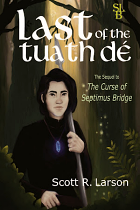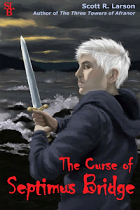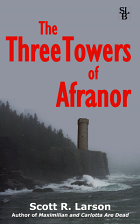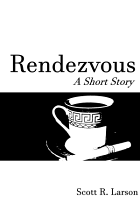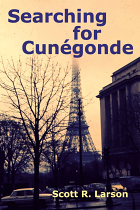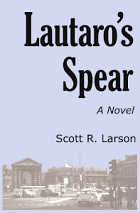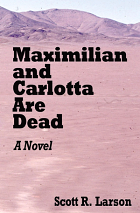Short Films and Miscellaneous Items Seen at the 2024 Galway Film Fleadh
Wednesday 10 July
IFI Local Films for Local People: The Glamour of Galway
The Irish Film Institute in Dublin continues to share gems and trinkets from its archives with audiences in Galway. Specifically, the IFI chooses decades-old short films from its collection that will be of specific interest to Galwegians for this annual program in the Galway Film Fleadh. (A previous edition was discussed on these pages seven years ago.)
This year’s installment, which was comprised of movies professionally made between the 1920s and the 1970s, eschewed the city of Galway for rural, remote and island locations. Some were British-made, and it’s always interesting to see the Brits treating Ireland—especially its western regions—as some remote, mysteriously inscrutable, foreign land that requires detailed explanation by the very proper English narrator. A couple of the flicks featured the Aran Islands, including a brief look at Inis Mór in the 1920s. A longer 1971 flick focuses on a young priest adjusting to life (including full immersion in the Irish language) on Inis Oirr. A centerpiece is the sight of men preparing their currachs (wooden boats) for ferrying a generation of their children, having completed primary school, on the Atlantic Ocean to the mainland for boarding school—and likely assimilation by mainstream 20th-century Ireland.
A 1940 film dramatized the hardscrabble life of a couple, fleeing Oliver Cromwell’s invasion for the rough remoteness of Connemara, and then that of their contemporary namesake descendants, whose lives are little changed since the 17th century. A 1974 film dealt with how that region had begun to modernize.
Of particular interest to cinephiles were a number of films featuring the American filmmaker John Huston. One showed the director proudly receiving his certificate of Irish citizenship. Another showed the great man enjoying his life at his estate St. Clerans in rural Galway. We see him horseback riding with his daughter (“not Anjelica, another one,” our presenter had warned us, lest we get our hopes up) and then indoors where he extols the beauty and charm of Ireland and explains why he chose to settle there (not mentioning any tax advantages) and why he always looks forward to returning there from his worldwide filming projects.
A couple of newsreels documented 1949 rescue of passengers from a downed plane in Galway Bay and the 1960 resettlement of the last 23 inhabitants of Inishark to the larger island Inishbofin. A bit of traditional music was provided by way of footage of the 1963 Fleadh Ceoil (music festival) in Tuam, a town better known these days for the rock band the Saw Doctors and revelations in recent years regarding a local mother-and-baby home that operated until 1961.
Programs like this one are great to see on a big screen in a real cinema, and the good news is that many of these films and many others are available to view for free on the IFI’s online archive viewer.
Thursday 11 July
Irish Talent, New Shorts 3: Fiction
As per the Film Fleadh literature, this particular shorts program explored “past and present narratives, highlighting the timeless need for connection and community. It features debut work and established directors.”
Where It All Began: This flick by Alan Dunne pulls off a neat trick reminiscent of a certain classic Neil Jordan film in that, at some point (probably later for me than for some others) we realize we weren’t really seeing the main character. The story is pure tearjerker. After years of estrangement, Fiona arrives back in her hometown for an awkward train platform reunion with her father Tom. Tall, blonde Fiona is played with reserve and then emotion by Laylah Beattie. Heartbroken Tom is embodied by Lalor Roddy, one of the great Irish screen faces, who can be seen in everything these days from the Film Fleadh’s first-night opener Kneecap to the John McGahern adaptation That They May Face the Rising Sun to the Netflix series Bodkin. The occasion is a funeral, so no better time to confront (or avoid) the past or the present. The emotional stuff is tough, but the film has the grace to end on a somewhat hopeful note.
Letter: Molly struggles to write a letter. Messages come in to encourage her as she fights distractions to work on what is clearly a burden. Only by the end of this brief portrait do we begin to comprehend the enormity of what Molly is dealing with, and we share her relief in beginning to come to grips with it. Molly is played by Grace Odumosu, who also wrote and produced the film. The helmer is writer/director/musician Joy Nesbitt, a busy Texan transplant juggling many interesting projects at the moment.
Young People of Ireland: The title will evoke memories mainly for Irish people who were around in the late 1970s. It was the memorable opening to a passage in a speech by Pope John Paul II during his visit to the Emerald Isle in 1979. Dubliner Sophie Meehan’s film follows Marian and Pamela on the big day of the Pontiff’s appearance in the Phoenix Park. Seemingly the only souls not at the event—apart from a couple of industrious vendors—they wander streets eerily quiet and depopulated as they chat, joke, have some fun and ultimately reflect on the massive gathering they have chosen to eschew. They are more than ready to throw off the restrictive traditions of the past, though one more than the other. A broken souvenir plate comes to symbolize modernizing Ireland’s disconnect with the past. Still, old traditions don’t shake off that easy. One of the girls thinks she might catch the train for Galway to see the papal gathering there.
Below the Window: This impressive 16-minute movie has an otherworldly mood about it. Set in a remote house in a dark landscape, it has a Gothic feel. What seems like it could be a supernatural horror story reveals itself to be more of a dark, allegorical fairy tale. Or maybe Magic Realism is the right term? Yana Koroliova plays a Ukrainian woman kept in the house by the heard-but-not-seen Aidan (voice of Steve Gunn). Is she expecting his baby or has she had his baby? It’s not at all clear. There seems to be an infant upstairs, but we can’t be certain that it’s not imaginary. A mysterious woman appears out of the night seeking refuge from a coming storm. She’s played with stern eeriness by Carrie Crowley, most recognizable these days from her standout role in the Oscar-nominated The Quiet Girl. Does she represent divine intervention, or is she harbinger of death? The film raises perplexing questions and then delivers the most satisfying non-answers. The tone and themes are distinctly Irish, but they are no doubt influenced and informed by the two main behind-the-screen artistic collaborators: director Salvador Alejandro Gutiérrez (previously of Mexico) and screenwriter Nusrat Islam Maati (formerly of Bangladesh). The result is a dreamlike tale that sticks in the mind long after.
Fadó, Fadó: Is there a contemporary political component to this tongue-in-cheek historical adventure? The story involves two Ulster siblings fleeing from the advancing Connacht forces of the warrior Queen Méabh. In any event, it has to be a coincidence that this flick would screen during football playoffs that would yield Armagh and Galway as the final teams. The title is a standard Irish language way of beginning an old tale (kind of like, once upon a time), and what we get is a shaggy dog story about how a desperate brother and sister come across a fallen legendary hero and then concoct a plan so that he might save Ulster once more. Definitely a crowd-pleaser, the film spins its adventure in a most entertaining way. The writer/director is Dallan Shovlin, who cut his filmmaking teeth on the crew for that Northern Ireland cottage industry known as Game of Thrones.
The Wilde Sisters: The story of Emily and Mary Wilde is so interesting that we kind of wish the filmmakers had made a straight biographical movie of the sisters—not in place of this one but in addition to. The Wilde Sisters is probably best appreciated if you are already familiar with the history, but it also works if, as happened with me, it sends you to the internet to refresh your memory. Illegitimate (as it was described then) half-sisters of Oscar Wilde, they had a somewhat ambiguous social status but with a sometime busy social life in the late 19th century. Their tragic final engagement was a Halloween party at a house in Monaghan. The pair perished when, during the last dance, the dress of one caught fire from a candle as did the dress of the other when she attempted to go to her sister’s aid. The screenplay by Táine King (who directed), Joanne Heffernan and Lorraine Higgins imagines Emily and Mary in an anachronistic purgatory where their processing for the afterlife keeps running into a hitch. As such, the film plays as a comedy with a bittersweet undertone as the sisters come to psychological terms for what happened to them. Great performances are turned in by Joanne Brennan and Tessa Fleming as Emily and Mary and by an assortment of other actors providing an intriguing and colorful background assortment of souls in heaven’s waiting room.
The Iron Man: Really more of a comedy sketch than a movie, The Iron Man follows the travails Tony, who uses his laundry skills to set up a new business model: door-to-door in-home ironing. In a nod to his Marvel namesake, he takes on superhero qualities in his quest to smooth out his customer’s wrinkles, but an arch villain lurks on the sidelines. A healthy sense of humor is displayed by writer/director Shane Mulrennan.
Remote Strutting: The joy of this workplace comedy—with a romcom element and displaying the project’s Covid roots—is the way it peels back our layers of perception like those of an onion until we finally fully understand what is actually going on. A very engaging Lisa Kelly plays I.T. professional Mia. We observe her office interactions with her boss and co-workers, but there are clues that not all is as it seems. We come to understand that the visuals are standing in for virtual online interactions during a lockdown period when everyone is working from home. At some point, though, the lockdown will end, and what will happen when everyone meets in person? Of particular interest is the friendship Mia has developed with Mark, played by Dane Whyte O’Hara of Darklands and Blue Lights and who impressed in the short film Neon Meets Argon. There remains one final twist to Mia’s story, which completely changes everything about our understanding of her and her life and which delivers a truly well earned feel-good ending. The kind that literally brings a cheer from the audience. The helmer is Lorna Fitzsimons, who previously made Meeting on the Stairs and was one of the co-directors of the entertaining romcom Poison Pen. The writer is (full disclosure!) my talented friend and neighbor Ruaidhri Hallinan.
Sunday 14 July
A Public Interview with Brian Cox
We film and TV viewers can be happy that Brian Cox is not a method actor.
One of the numerous interesting observations he made about acting during this recorded radio interview was that people, who take things too seriously by immersing themselves in a role to the point that they can’t break character between takes or even work days, burn out faster. This was in reference to his Succession co-star Jeremy Strong, but he also offered as an example “Danny,” i.e. Daniel Day-Lewis, who bowed out from acting at the tender age of 60. (The two worked together on Jim Sheridan’s The Boxer.)
For his part, Cox is still going strong and is as busy as ever at the age of 78, and he says firmly that he has no plans to retire. A consummate character actor, often playing villains, he did not really achieve worldwide fame until six years ago with the role of corporate family patriarch Logan Roy in the hit series Succession.
He says he misses his anonymity—the freedom to be in public without being recognized—but that at his age he is hardly going to complain. He offered the perspective of someone else who has been in the public spotlight for many, many years, noting that Woody Allen has been known to complain about the constant attention but then shrugs and says, philosophically, but on the other hand you get really great Knicks seats.
A relaxed presence who strode on stage to the regal strains of Succession’s theme music and thunderous applause from the crowd in Galway’s Galmont Hotel, Cox provided lengthy, detailed answers to questions from interviewer Kay Sheehy of RTÉ Radio’s Arena program. (You can listen to it online.) Following the standard format, she took him through his life from his childhood in Dundee, Scotland, to his years on Succession.
He came from a hardscrabble working class background and, as a youth in need of money, looked for a job in a local theater where he was amazed to be trusted with delivery of the daily receipts. Once he tried acting, he was hooked, and he lamented that paths into acting for working-class people do not exist now as they did then. He played pretty much all the major Shakespearean roles on stage, but his real interest was in the kind of acting he was first familiar: on movie screens.
He has played hundreds of roles in movies and television. (Trust me, you’ve seen him many, many times without realizing who he was.) By coincidence he appeared in two similar Scotland-set films shot in Ireland which were released in 1995. In Michael Caton-Jones’s Rob Roy he was the villainous Killearn. In Mel Gibson’s Braveheart he was William Wallace’s uncle. In his own outspoken (and occasionally salty) way, he opined that the former had the better screenplay (by Alan Sharp), but the latter had the better director. “He was amazing in the way that he ran the set, … the way he worked with the actors, he was just incredible,” he said. “I have a lot of time for Mel Gibson and he gets quite maligned, Mel, but he’s actually a really good man”
Sheehy pointed out that Cox was the first two play two iconic characters on screen and then saw other actors pick up Oscars for playing them later. In Michael Mann’s Manhunter (adapted from Thomas Harris’s novel Red Dragon), Cox was cast as serial killer Hannibal Lecter. A half-decade later Anthony Hopkins won an Oscar for playing the psychopath in Jonathan Demme’s The Silence of the Lambs.
More recently, he played the title character in Jonathan Teplitzky’s Churchill. The same year (2017) Gary Oldman won an Oscar for playing Sir Winston in Darkest Hour. Eschewing false humility, Cox asserted his own performance was better. As for Hannibal, while not criticizing Hopkins’s performance, he mimicked Hopkins’s famous lip action in the role after noting that Mann’s movie had a very “different” take on the character than Demme’s.
Cox had many entertaining stories from his long years and varied roles in the film acting business. Years ago, when listening to fellow British actor Nigel Hawthorne complain about working with Sylvester Stallone on 1993’s Demolition Man, Cox quipped that he would gladly have him trade Sly Stallone any day for Steven Seagal, with whom Cox worked three years later in The Glimmer Man.
Sheehy clearly couldn’t wait to get to questions about Succession, including queries such as who he thought Logan’s favorite child was. (He thought Shiv, although Logan might have eventually come around to Roman. Definitely not Kendall.) He agreed with fans who said that Logan died too soon in the final series but also allowed that it was kind of inevitable because, after all, the show’s name was… Succession. Did he mind that Logan’s demise was off-screen, depriving the actor of a dramatic death scene? It was better that way, he smiled slyly, because it left open the possibility that Logan wasn’t really dead.
We got a detailed account of how Logan’s birthplace was established. Cox actually suggested early on that the character could be a transplanted Scotsman, but show creator Jesse Armstrong was insistent that Logan had to be American. Later, confusingly, Cox was told that Logan’s birthplace was Quebec. Later when Cox read the script for the ninth episode, he was surprised to see that Logan’s home town had been changed to his own Dundee.
“Oh we thought it’d be a little surprise,” show creator Jesse Armstrong told him. Heaving a sigh, Cox said, “That’s f***ing writers for you.”















